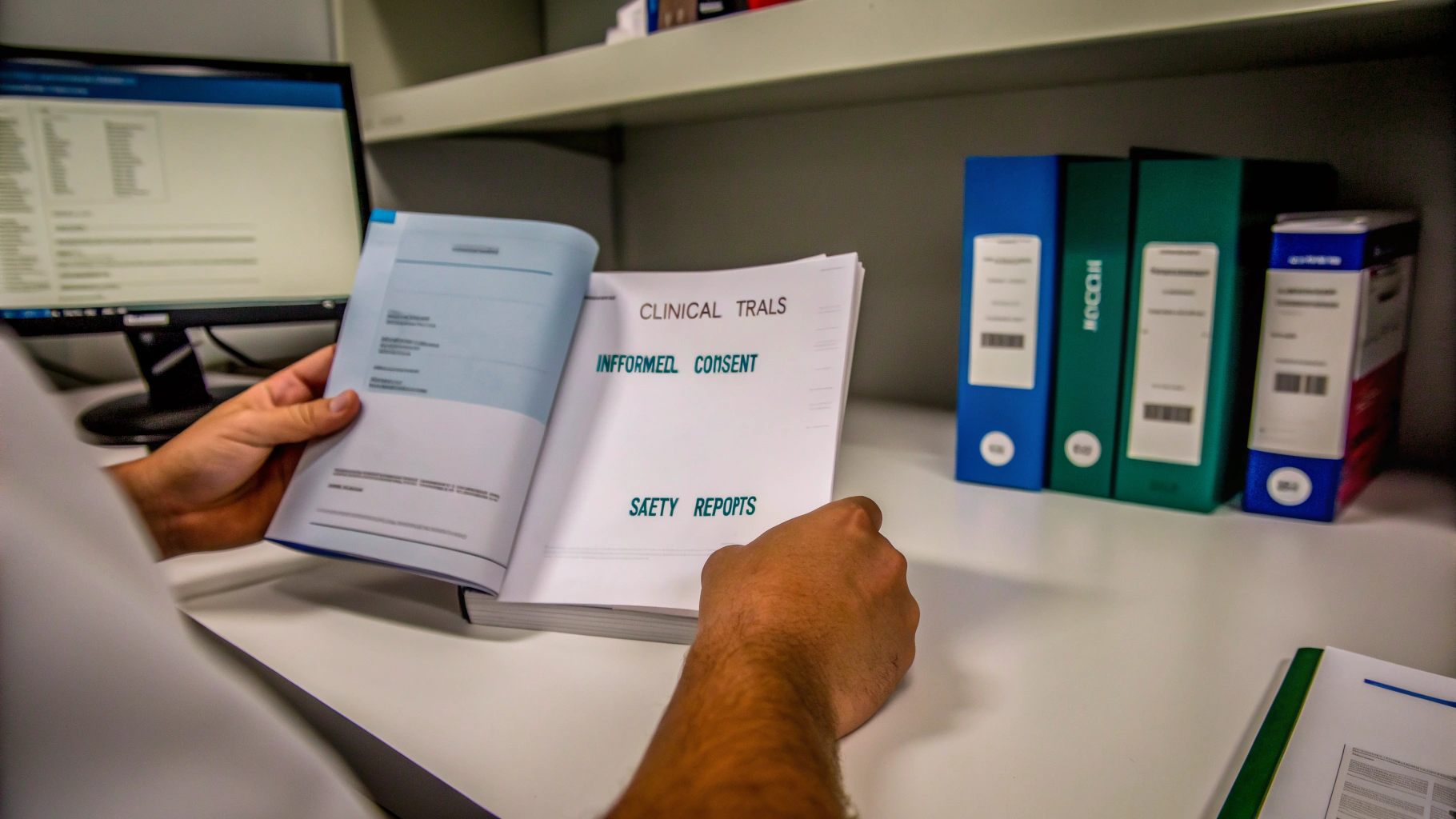Master the EU Clinical Trial Regulation: Compliance Strategies for Success

Overview
The article addresses the pressing compliance challenges posed by the EU Clinical Trial Regulation, highlighting the critical need for a unified approval process that not only enhances patient safety but also safeguards data integrity.
To tackle these challenges effectively, it outlines essential strategies aimed at streamlining processes and enhancing transparency. Pharmaceutical professionals must adopt best practices, such as thorough documentation and comprehensive risk assessments, to navigate the complexities of compliance. These practices are not just recommendations; they are necessary steps towards ensuring adherence to regulatory standards.
Moreover, successful compliance projects serve as valuable case studies, illustrating the effectiveness of these strategies in real-world scenarios. By learning from these examples, professionals can better understand the importance of a proactive approach to compliance.
In conclusion, embracing these compliance solutions is imperative for pharmaceutical professionals. By prioritizing best practices and fostering a culture of transparency, they can not only meet regulatory requirements but also enhance overall patient safety and data integrity. Are you ready to take the next step towards compliance excellence with AVS Life Sciences?
Introduction
The landscape of clinical trials in Europe is experiencing a significant shift with the introduction of the EU Clinical Trial Regulation. This framework is designed to enhance patient safety and streamline research processes across member states. By simplifying the application process, it emphasizes transparency and robust risk management, setting new compliance standards in the pharmaceutical industry.
However, organizations face pressing questions as they adapt to these changes:
- How can they ensure adherence to these stringent regulations while fostering innovation?
- What strategies can pharmaceutical professionals employ to navigate the complexities of compliance effectively?
To address these challenges, it is crucial for organizations to develop comprehensive compliance strategies that not only meet regulatory requirements but also promote a culture of innovation. Successful case studies demonstrate that proactive engagement with regulatory bodies and continuous training for staff can lead to effective compliance solutions.
In conclusion, as the clinical trial landscape evolves, embracing these regulatory changes presents an opportunity for organizations to enhance their compliance frameworks while driving innovation. Engaging with AVS Life Sciences can provide the necessary insights and tools to navigate this complex environment successfully.
Overview of the EU Clinical Trial Regulation: Key Objectives and Impacts
The EU clinical trial regulation aims to unify the study approval process across EU member nations, significantly enhancing patient safety and data integrity. Its key objectives include:
- Streamlining Processes: This regulation simplifies the application process, allowing sponsors to submit a single application for clinical trials across multiple member states. By reducing administrative burdens, it accelerates study initiation, facilitating compliance with GXP standards and FDA regulations.
- Enhancing Transparency: The EU clinical trial regulation (CTR) mandates the registration of all research studies in the Clinical Studies Information System (CTIS) and requires the publication of results. This promotes openness and accountability in research. In its inaugural year, over 3,000 medical documents related to regulatory procedures for 50 medicines were made publicly available under the new transparency rules, highlighting the regulation's commitment to robust documentation practices.
- Enhancing Patient Safety: With a focus on strong risk management and safety reporting systems, the regulation, known as the EU clinical trial regulation, aims to protect study participants. By integrating safety monitoring into the research framework and ensuring adherence to CAPA and Standard Operating Procedures (SOPs), the EU CTR enhances oversight and prioritizes participant welfare throughout the process.
The impacts of the EU clinical trial regulation are profound, reshaping the landscape of pharmaceutical development in Europe. For example, the regulation's emphasis on transparency is expected to bolster public confidence in clinical trials, encouraging greater participation and fostering innovation. As organizations adapt to these changes, they must ensure compliance with the EU clinical trial regulation to maintain their competitive edge in the evolving market. AVS Life Sciences stands ready to assist pharmaceutical regulation officers with comprehensive quality management and regulatory adherence solutions tailored to meet these new challenges. The transition to the EU clinical trial regulation includes a three-year implementation period, during which stakeholders are encouraged to familiarize themselves with the new requirements and refine their operational strategies accordingly.
Navigating Compliance: Responsibilities of Pharmaceutical Professionals Under the Regulation
Pharmaceutical experts play a crucial role in ensuring adherence to the EU clinical trial regulation. However, navigating compliance challenges can be daunting. Here’s how professionals can effectively meet these challenges:
-
Preparation of Documentation: Professionals must prepare and maintain comprehensive documentation, including trial protocols, informed consent forms, and safety reports. This documentation is essential for illustrating adherence to governing criteria, particularly those associated with the EU clinical trial regulation and Computer System Validation (CSV).
-
Risk Assessment: Conducting thorough risk assessments to identify potential issues and implementing mitigation strategies is vital. This involves understanding the phases of CSV—Installation Qualification (IQ), Operational Qualification (OQ), and Performance Qualification (PQ)—to ensure that systems function as designed and meet compliance standards.
-
Collaboration with Oversight Agencies: Engaging with oversight bodies during the approval process and maintaining open lines of communication is critical for adherence. Professionals should be well-versed in the standards set forth by the FDA and other regulatory agencies regarding software validation and CSV, particularly in relation to the EU clinical trial regulation.
-
Training and Awareness: Ensuring that all team members are trained on the regulation and its implications fosters a culture of adherence within the organization. This training should encompass best practices in CSV, ensuring that staff understand the significance of each validation stage and its impact on overall quality.
By grasping and meeting these obligations, professionals can significantly reduce the risk of non-adherence and enhance the overall standard of clinical trials. Moreover, leveraging AVS Life Sciences' expertise in quality management and oversight solutions can further bolster compliance efforts. Are you ready to elevate your compliance strategy?

Implementation Strategies: Best Practices for Compliance with the EU Clinical Trial Regulation
Organizations face significant challenges in achieving compliance with the EU clinical trial regulation. However, by implementing the following best practices, they can navigate these complexities effectively:
- Develop a Compliance Framework: Establish a robust compliance framework that clearly defines processes, responsibilities, and documentation requirements. This framework serves as the backbone for ensuring adherence to standards.
- Utilize Technology Solutions: Leverage electronic systems to manage trial data and documentation efficiently. These solutions simplify processes and enhance data precision, which is essential for meeting regulations.
- Conduct Regular Training: Implement ongoing training programs for staff to keep them informed about the latest legal updates and adherence requirements. This is crucial for maintaining a knowledgeable workforce capable of navigating complex regulations.
- Engage in Continuous Monitoring: Regularly evaluate adherence processes and outcomes to identify areas for improvement. Ongoing observation helps organizations stay aligned with compliance expectations and adapt to shifts in the oversight environment.
- Foster a Culture of Adherence: Promote open communication regarding regulatory issues and encourage a proactive approach to risk management. A culture that emphasizes adherence can significantly reduce the chances of legal violations.
Incorporating these strategies not only aids in maneuvering through the intricacies of EU clinical trial regulation but also enhances the overall efficiency of compliance efforts. Statistics reveal that organizations with well-defined compliance frameworks experience a 30% reduction in regulatory non-compliance incidents. Furthermore, case studies illustrate that companies engaging in continuous training and monitoring have seen improved audit outcomes, with many achieving zero findings during inspections. By adopting these best practices, organizations can position themselves for success in the highly regulated environment of clinical trials.
Conclusion
The EU Clinical Trial Regulation represents a significant shift in the clinical research landscape, focusing on enhancing patient safety, streamlining processes, and promoting transparency among member states. By unifying the approval process and emphasizing rigorous compliance standards, this regulation not only protects participants but also drives innovation within the pharmaceutical industry.
Navigating the complexities of compliance presents challenges, but preparation, risk assessment, and collaboration among pharmaceutical professionals are crucial. Organizations should adopt best practices, such as:
- Developing robust compliance frameworks
- Leveraging technology solutions
- Cultivating a culture of adherence
These strategies are vital for ensuring that clinical trials align with the stringent requirements established by the regulation.
Embracing the EU Clinical Trial Regulation offers organizations a chance to refine their compliance strategies while fostering innovation. By actively engaging with regulatory bodies and prioritizing continuous training, pharmaceutical professionals can position themselves for success in this dynamic environment. A steadfast commitment to compliance not only enhances patient safety but also bolsters the integrity and reliability of clinical research, underscoring the importance of these regulatory changes in shaping the industry's future.
Frequently Asked Questions
What is the main purpose of the EU Clinical Trial Regulation?
The main purpose of the EU Clinical Trial Regulation is to unify the study approval process across EU member nations, significantly enhancing patient safety and data integrity.
How does the regulation streamline the clinical trial application process?
The regulation simplifies the application process by allowing sponsors to submit a single application for clinical trials across multiple member states, reducing administrative burdens and accelerating study initiation.
What measures are included in the regulation to enhance transparency in clinical trials?
The regulation mandates the registration of all research studies in the Clinical Studies Information System (CTIS) and requires the publication of results, promoting openness and accountability in research.
How does the EU Clinical Trial Regulation aim to enhance patient safety?
The regulation focuses on strong risk management and safety reporting systems to protect study participants, integrating safety monitoring into the research framework and ensuring adherence to CAPA and Standard Operating Procedures (SOPs).
What are the expected impacts of the EU Clinical Trial Regulation on pharmaceutical development in Europe?
The regulation is expected to reshape the landscape of pharmaceutical development by bolstering public confidence in clinical trials, encouraging greater participation, and fostering innovation.
What is the implementation period for the EU Clinical Trial Regulation?
The transition to the EU Clinical Trial Regulation includes a three-year implementation period during which stakeholders are encouraged to familiarize themselves with the new requirements and refine their operational strategies.
How can organizations ensure compliance with the EU Clinical Trial Regulation?
Organizations can ensure compliance by adapting to the new requirements and seeking assistance from experts, such as AVS Life Sciences, which offers comprehensive quality management and regulatory adherence solutions.
